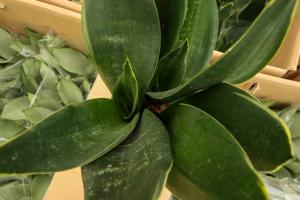What is Eating My Water Lily Plants
Water lilies are beautiful aquatic plants that add an elegant touch to any water garden or pond. However, keeping these plants healthy and thriving can be a challenge, as they can often fall victim to various pests and predators. One of the most common problems that water lily enthusiasts face is mysterious plant damage that appears to be caused by some kind of creature. If you're wondering what is eating your water lily plants, read on to learn more.
Identifying the Culprit
The first step to figuring out what is eating your water lily plants is to identify the culprit. There are several potential suspects, including insects, snails, tadpoles, and fish, among others. Some of the most common pests that feed on water lilies include:
Red spider mites
Aphids
Caterpillars
Snails and slugs
To determine who the culprit is, you'll need to look for signs of damage on the leaves and stems of the water lily. For example, if you see tiny holes in the leaves, it could be a sign of aphids or caterpillars. If the leaves are turning yellow or brown, it could be a sign of red spider mites. You may also see slimy trails left by snails or slugs.
Preventing and Treating Plant Damage
If you've identified the culprit that is eating your water lily plants, the next step is to take action to prevent further damage. There are several strategies you can employ to protect your plants, including:
Handpicking pests off the plants
Using insecticidal soap or horticultural oil
Introducing natural predators, like ladybugs or lacewings
Placing copper rings or wool around the plants to deter snails and slugs
Keeping the water clean and free of debris to prevent standing water and mosquito breeding
It's important to note that some treatments, like insecticidal soap, can be harmful to certain fish and other aquatic life. Be sure to read the label and use these products with caution.
Maintaining Healthy Water Lilies
In addition to protecting your water lily plants from pests and predators, there are some general practices you can follow to maintain healthy plants. Some tips include:
Planting water lilies in nutrient-rich soil or planting baskets with aquatic plant fertilizer
Providing adequate light and water temperature (water lilies prefer water temperatures around 75°F)
Pruning dead or damaged leaves to prevent further damage and promote healthy growth
Repotting the water lilies every 2-3 years to refresh the soil and promote healthy root growth
By following these tips and strategies, you can keep your water lily plants healthy and thriving, and prevent damage from pesky pests and predators.
Conclusion
If you notice mysterious plant damage on your water lily plants, don't panic. By identifying the culprit and taking action to prevent further damage, you can keep your plants healthy and vibrant. Remember to take a proactive approach to plant care, and maintain healthy conditions for your aquatic plants to thrive.

 how many times do yo...
how many times do yo... how many planted tre...
how many planted tre... how many pine trees ...
how many pine trees ... how many pecan trees...
how many pecan trees... how many plants comp...
how many plants comp... how many plants can ...
how many plants can ... how many plants and ...
how many plants and ... how many pepper plan...
how many pepper plan...































